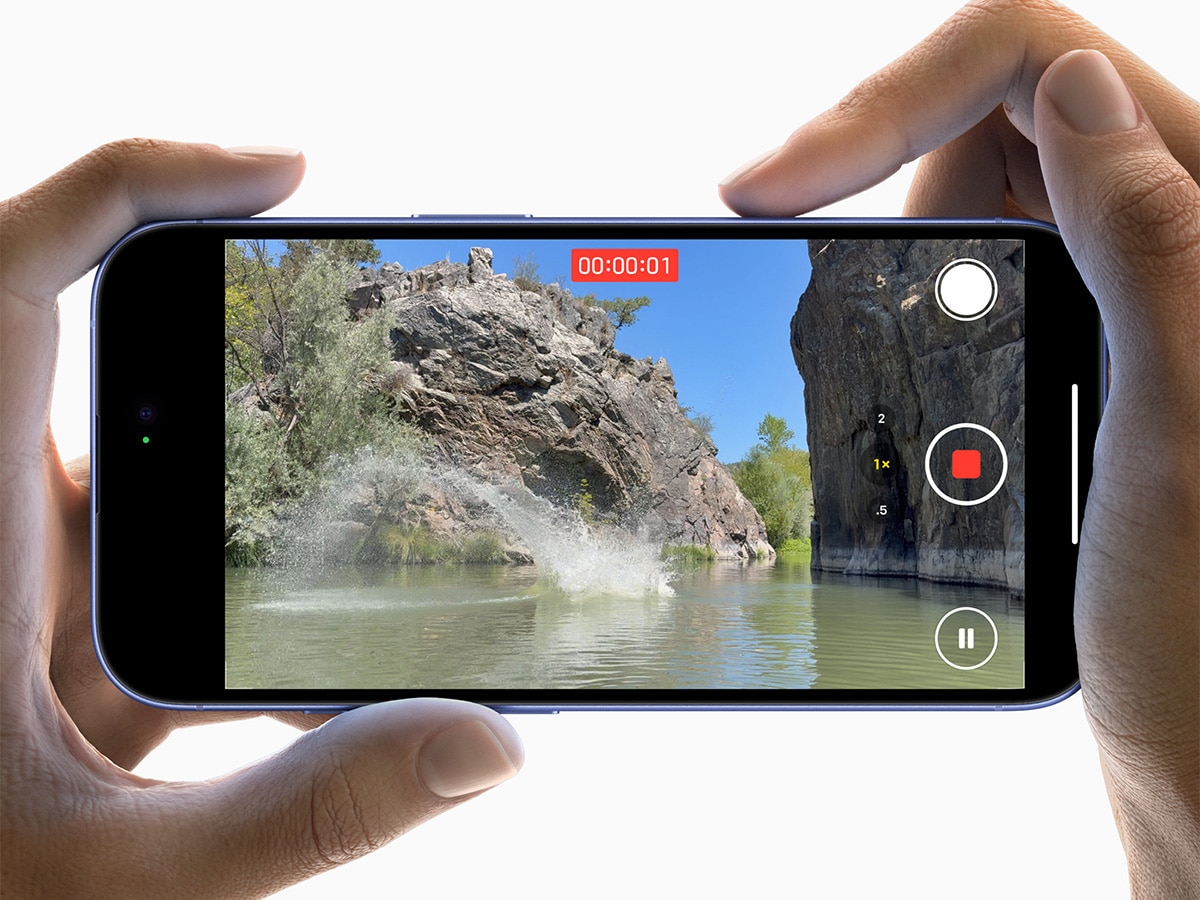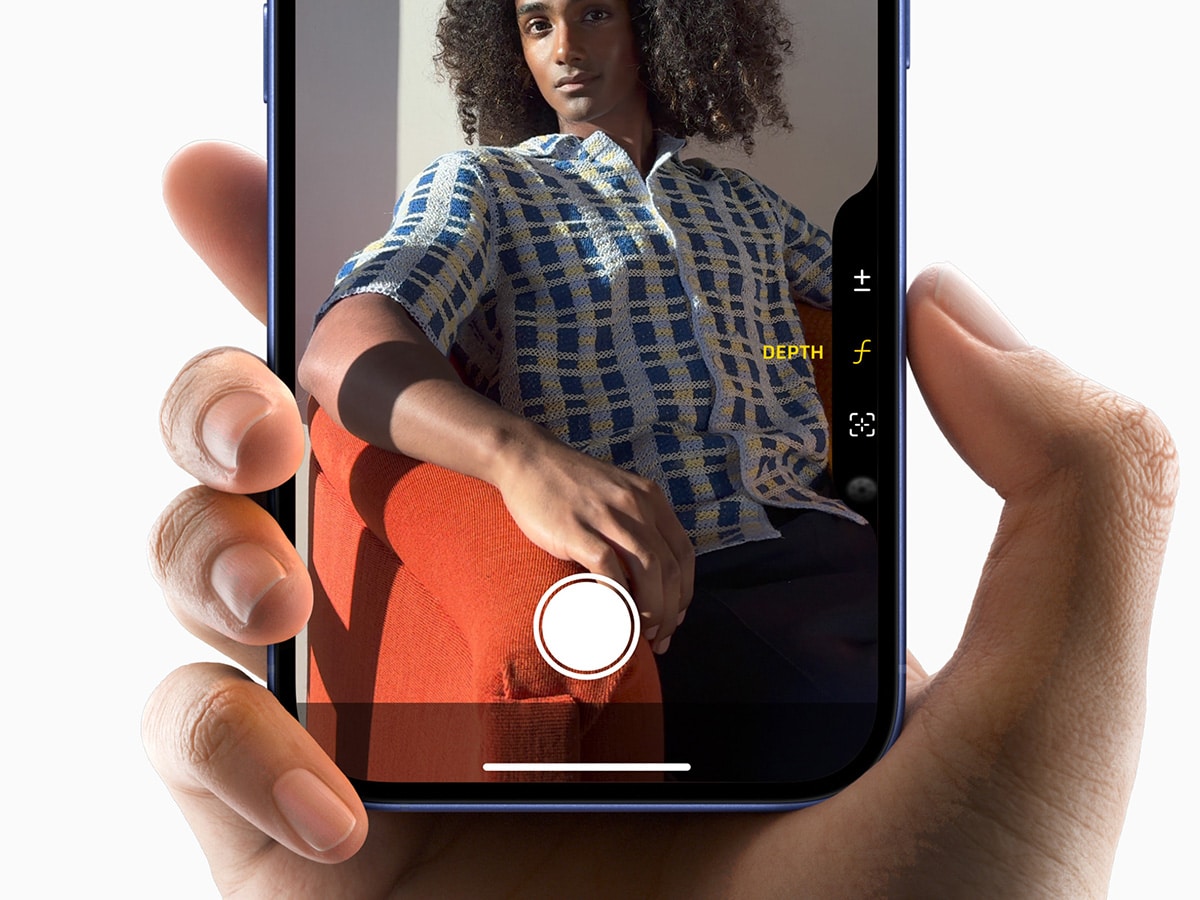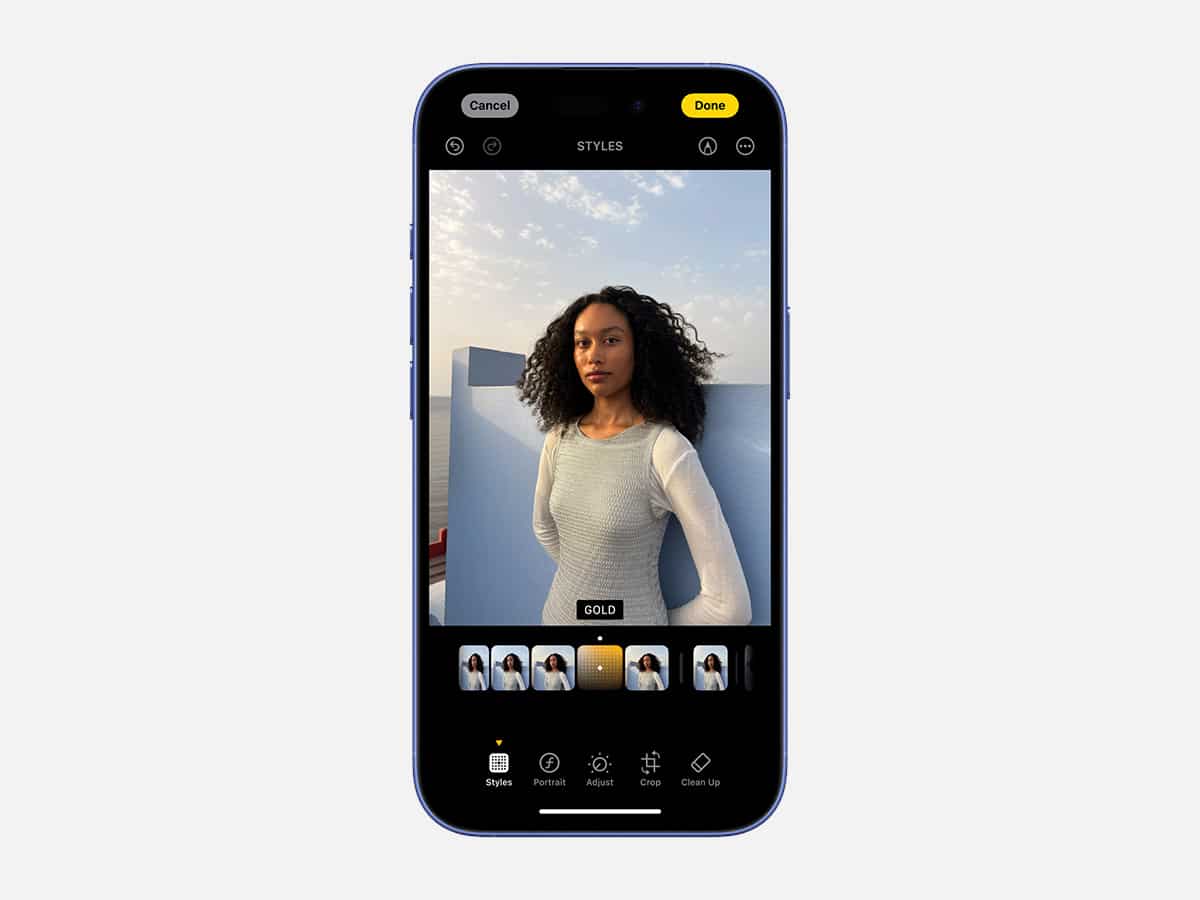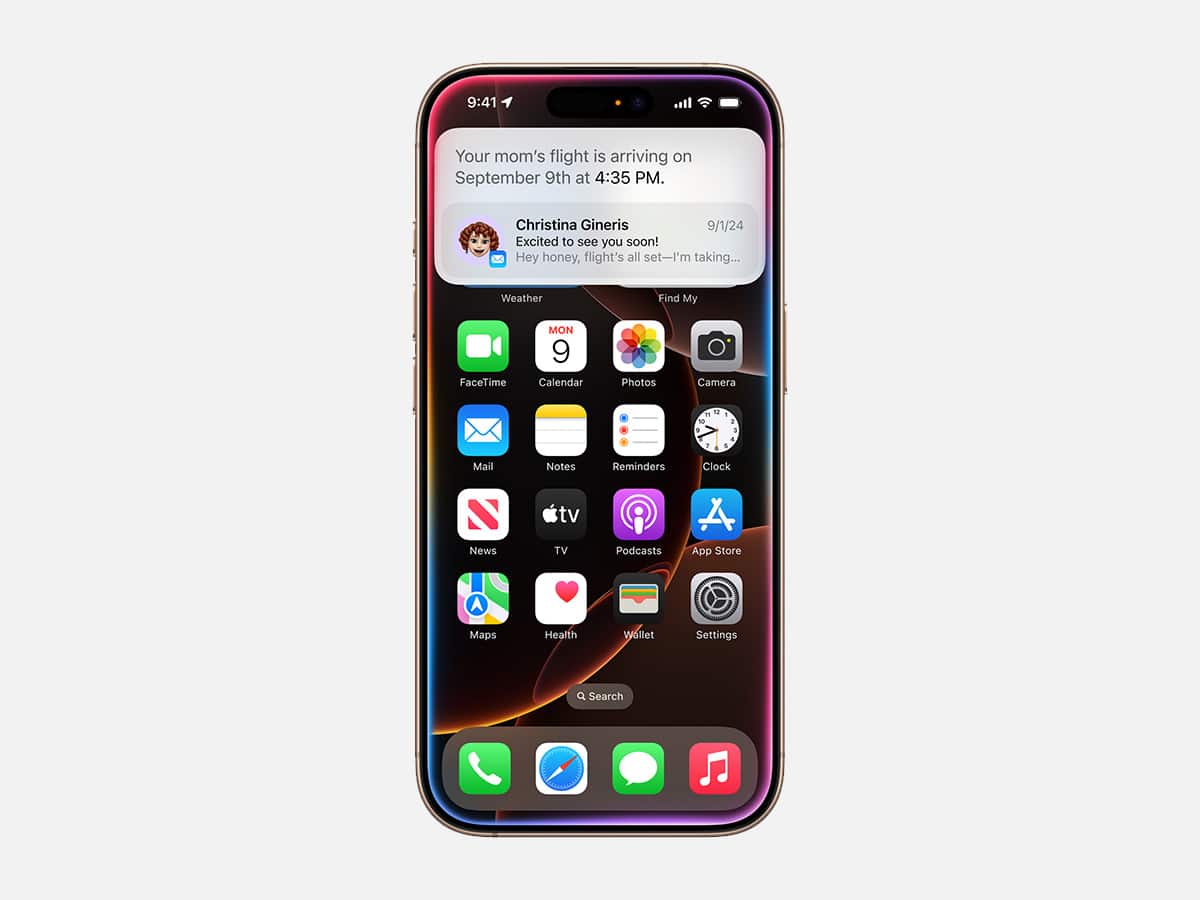
Published:
Readtime: 13 min
Every product is carefully selected by our editors and experts. If you buy from a link, we may earn a commission. Learn more. For more information on how we test products, click here.
The new Apple iPhone 16 will be available to pre-order from 10pm AEST Friday, 13 September 2024, before it’s available in your local Apple Store and major retailers from Friday, 20 September 2024. Pricing for the new line-up starts at AUD$1,399 and increases to AUD$1,799 for the iPhone 16 Pro models, which makes them up to AUD$100 cheaper than the outgoing iPhone 15 models.
New features for the standard iPhone 16 include a new A18 chip with 6-core CPU which is 30 per cent faster than before, a 5-core GPU which is up to 40 per cent faster, and the Action Button from the previous-generation 15 Pro models. Meanwhile, the iPhone 16 Pro models gain an A18 Pro chip with 6-core GPU which is up to 20 per cent faster than the previous generation and a new 6-core CPU which Apple claims is the fastest in a smartphone, it’s 15 per cent faster than before while using 20 per cent less power.
Maybe the most important new feature for both iPhone 16 and iPhone 16 Pro models is the addition of a tactile button called “Camera Control.” This button allows quick controls through a button on the side of the phone which works like a camera shutter button, but also gives further gesture and touch controls. We’re explaining how this feature works, and more, as we take an in-depth look at new iPhone 16 line-up below!
RELATED: Apple iPad Air (2024) Review: Have We Reached Peak iPad?

iPhone 16 Release Date in Australia
The new iPhone 16 will be available to pre-order in Australia from 10pm AEST Friday, 13 September 2024. It will then be available in the Apple Store and major retailers from Friday, 20 September 2024.

iPhone 16 Price in Australia
The iPhone 16 line-up is priced from AUD$1,399 for the entry-level iPhone 16 with 128GB of storage. However, most will find this amount of storage insufficient, and the sweet spot in the line-up is typically the larger iPhone 16 Plus with 256GB of storage, which is priced at AUD$1,799.
If you’re a content creator and value the highest quality video and even faster processing, check out the iPhone 16 Pro models, which start from AUD$1,799 for the smaller iPhone 16 Pro with 128GB. These models are 0.2-inches larger than previous-generations. Still, the sweet spot in the iPhone 16 Pro line-up is typically the standard-size Pro with 256GB of storage, priced at AUD$1,999.
If you want to go all out, the most expensive iPhone 16 Pro Max with 1TB of storage will cost an eye-watering AUD$2,849. Here’s a complete list of pricing for the new iPhone 16 line-up:
- Apple iPhone 16 128GB – $1,399
- Apple iPhone 16 256GB – $1,599
- Apple iPhone 16 512GB – $1,949
- Apple iPhone 16 Plus 128GB – $1,599
- Apple iPhone 16 Plus 256GB – $1,799
- Apple iPhone 16 Plus 512GB – $2,149
- Apple iPhone 16 Pro 128GB – $1,799
- Apple iPhone 16 Pro 256GB – $1,999
- Apple iPhone 16 Pro 512GB – $2,349
- Apple iPhone 16 Pro 1TB – $2,699
- Apple iPhone 16 Pro Max 256GB – $2,149
- Apple iPhone 16 Pro Max 512GB – $2,499
- Apple iPhone 16 Pro Max 1TB – $2,849

iPhone 16 Design Changes and Colours
The design of the new iPhone 16 is all-new, with the most noticeable change being the redesigned camera module that houses the new 48MP Fusion camera with 2x optical-quality Telephoto zoom alongside a 12MP Ultra Wide camera. This new camera works in conjunction with a new tactile ‘Camera Control’ switch down the side of the iPhone with three unique touch/ click experiences. We’ll explain all of these features further below, but essentially, they give greater control over the iPhones camera functions.
There are some changes on the inside, too. Battery life has increased in every model, there’s a tougher latest-generation Ceramic Shield which Apple claims is 2x tougher than glass on any other smartphone, and water- and dust-resistant design which carries over from previous models.
Finally, the standard iPhone 16 gains the Action Button from the iPhone 15 Pro models, released last year, and the Pro models now have a 0.2-inch large screen size across the board.
Screen sizes for the new iPhone 16 line-up are as follows:
- iPhone 16 – 6.1-inch Super Retina XDR display with OLED technology and the Dynamic Island
- iPhone 16 Plus – 6.7-inch Super Retina XDR display with OLED technology and the Dynamic Island
- iPhone 16 Pro – 6.3 inches Super Retina XDR displays with Always-On and ProMotion
- iPhone 16 Pro Max – 6.9 inches Super Retina XDR displays with Always-On and ProMotion
The standard iPhone 16 line-up comes in the following colours, most of which are new:
- Ultramarine
- Teal
- Pink
- White
- Black
The iPhone 16 Pro line-up comes in the following titanium finishes:
- Black titanium
- Natural titanium
- White titanium
- Desert titanium

What’s Changed and Improved in the New iPhone 16?
- Apple Intelligence (systemwide Writing Tools, summarised notifications, new Siri, etc.)
- Camera Control button with high-precision force sensor
- 48MP Fusion camera with 2x optical-quality Telephoto option and 12MP Ultra Wide
- A18 chip with 6-core CPU (30 per cent faster) and 5-core GPU (40 per cent faster)
- Notes and Phone apps, users can also record, transcribe, and summarise audio
- Ceramic Shield with an advanced formulation that is 50 per cent tougher
- Larger battery to offer a big boost in battery life
- Action button comes to iPhone 16 and iPhone 16 Plus
While it’s become a running joke to look at the new iPhone release and question the changes Apple has made, let us be the first to tell you these phones have taken a big step-forward for user-experience.
There’s significantly increased battery life in both iPhone and Pro models, but it’s the standard model that benefits the most. Due to the larger battery, Apple is able to fit a more powerful (and efficient) A18 processor that maximises the new Apple Intelligence software with upgraded 16-core Neural Engine designed for large generative models. They say it can run ML models up to 2x faster than the A16 Bionic chip, but all you need to know is that this chip helps the AI work smarter, not harder, conserving battery life.
Apple Intelligence isn’t ground-breaking for those who use AI as part of their workflow, but it might be the first time we see mass adoption of this technology. While it’s an evolving space (even for Apple), most use-cases currently centre around “Writing Tools,” which are built into iOS 18 (and available for older iPhones, too).
Using this software, you users can rewrite, proofread, and summarise text across apps, this includes Mail, Notes, Pages, and third-party apps. However, what we’re most excited for is the integration into the Phone app, which now lets you record, transcribe, and summarise audio from a phone call. Participants are notified, and once the call ends, Apple Intelligence generates a summary of key points.
There’s also integration into the Photos app where users can search for a specific photo using “natural language,” and search for specific moments in video clips.



Hardware-wise, the Action Button from the iPhone 15 Pro models has arrived to the standard iPhone 16. It allows you to open the camera, flashlight, and switch between Ring and Silent, activate Voice Memos, Focus, Translate, and more. Still, the more significant addition is the new Camera Control button that’s arrived to all iPhone 16 models. Like many users, we had our Action Button set to open the camera, and this is taking that a step further, and gives you actually control over the phones cameras.
The Camera Control button lets you quickly launch the camera, take a photo, and start video recording, but also adjust zoom, adjust exposure, and depth of field with a new camera preview function.
Later this year, Apple says “Camera Control will be updated with a two-stage shutter to automatically lock focus and exposure on a subject with a light press,” and we can’t wait to try that out.



Last but not least, the new iPhone 16 gains a new 48MP Fusion camera with a 2x optical-quality Telephoto option alongside a new 12MP Ultra Wide camera with autofocus for macro photography. This allows you to take spatial photos and videos, which work with the Apple Vision Pro. These videos also gain wind noise reduction, powered by machine learning (ML) algorithms, but they don’t use the four mic array from the Pro.
Speaking of which, let’s have a closer look at the Pro models to see what you gain over the standard iPhone 16 and 16 Plus.

What’s Changed and Improved in the New iPhone 16 Pro and Pro Max?
- Apple Intelligence (systemwide Writing Tools, summarised notifications, new Siri, etc.)
- Larger display sizes: 6.3 inches on iPhone 16 Pro and 6.9 inches on iPhone 16 Pro Max
- Camera Control button with high-precision force sensor
- New 48MP Fusion camera with quad-pixel sensor for 4K120 fps video recording in Dolby Vision
- 5x Telephoto camera now comes on both iPhone 16 Pro and iPhone 16 Pro Max
- 4K120 fps ProRes and Log directly to an external storage device for efficient pro workflows
- iPhone 16 Pro and iPhone 16 Pro Max now take spatial photos
- Four new studio-quality mics that preserve true-to-life recorded sounds with Spatial Audio
- A18 Pro chip which is 15 per cent faster then before while using 20 per cent less power
- Notes and Phone apps, users can also record, transcribe, and summarise audio
Beyond the iPhone 16 and 16 Plus models, the Pro models are faster, larger, more powerful, and all the other words that Apple uses to describe it’s flagship products. However, what we’re most excited to test out are the new display sizes, which have increased by 0.2-inches across the board.
These new iPhone 16 Pro’s feature the thinnest borders ever, and more importantly, they’re physically larger, with displays measuring 6.3 inches on iPhone 16 Pro and 6.9 inches on iPhone 16 Pro Max. This is 0.2-inch increase, which now compares favourably to the sizeable Samsung S24 Ultra (6.8-inches). It will be interesting to see how they feel in-hand, and we wonder if the sweet-spot will be the smaller 6.3-inch Pro.
Beyond a simple increase in size for watching video, this increase has helped Apple create a more efficient phone. These Pro models offer greater heat dissipation for “up to 20 per cent better sustained performance,” and this has also effected battery life where the brand is claiming a “huge leap in battery life.”



Camera’s are also improved, the 5x telephoto lens arrives to the smaller iPhone 16 Pro, but the bigger story is the upgraded camera system that offers a new 48MP Fusion main camera.
This quad-pixel sensor brings 4K120 fps video recording in Dolby Vision, which Apple says is a first for a smartphone. You’ll also get a new 48MP Ultra Wide camera which also comes with a quad-pixel sensor with autofocus. This let’s you take a high-res 48MP ProRAW and HEIF image, which in laymans terms, let’s you zoom in, crop, and take crispy macro shots.
We’re eager to test out the four new studio-quality mics, too. We found the microphone on our iPhone 15 Pro Max to be amongst the best in smartphones, but Apple says they’ve improved on this even further to preserve true-to-life recorded sounds. These Pro phones can also edit video sound with Audio Mix, and Apple says users can adjust the sound after capture to focus on the voice of the person on camera, make it sound like the video was recorded inside a professional studio, or position vocal tracks in the front and environmental noises in surround sound. This is set to make a significant difference for social media content creators.
If you’re pushing the boundaries of your iPhone 16 Pro’s camera, you can capture 4K120 fps ProRes and Log directly to an external storage device for efficient pro workflows, utilising the USB-C port.



Finally, we can’t talk about any new iPhone release without mentioning the new chip, and the iPhone 16 Pro and Pro Max use a new A18 Pro chip which is the fastest ever, obviously.
This chip has led to a 17 per cent increase in total system memory bandwidth for faster experiences using Writing Tools, Image Playground, and helps overall graphics. However, the real increase is in the 6-core GPU, which is up to 20 per cent faster than the previous generation, and the new 6-core CPU which is 15 per cent faster while using 20 per cent less power. Simply put, this thing is a powerhouse.
You probably won’t notice a massive difference when you’re going about your everyday tasks with this new power, but when it comes time to ask Apple Intelligence to find a clip from a video in your photo library, the extra power from the CPU, GPU, and new 16-core Neural Engine will make a noticable difference.
You’ll also like:


































Comments
We love hearing from you. or to leave a comment.